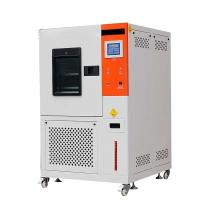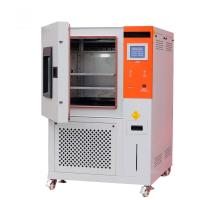In the realm of electronics manufacturing, resistors, capacitors,
and chips are the building blocks of countless electronic devices.
Their performance and reliability under various environmental
conditions are of utmost importance. The Constant Climatic Test
Chamber is a specialized and invaluable tool designed specifically
for subjecting these electronic components to precise temperature
and humidity tests. This chamber enables manufacturers,
researchers, and quality control professionals to create and
maintain stable environmental conditions, allowing for accurate
assessment of how resistors, capacitors, and chips perform under
different temperature and humidity scenarios.
The Constant Climatic Test Chamber is engineered to meet the unique
testing requirements of resistors, capacitors, and chips. These
components are used in a wide variety of applications, from
consumer electronics like smartphones and laptops to high - end
industrial equipment and aerospace systems. The primary purpose of
this chamber is to simulate real - world environmental conditions
that these components may encounter during their lifespan, with a
focus on temperature and humidity variations.
By subjecting resistors, capacitors, and chips to controlled
temperature and humidity conditions, manufacturers can identify
potential weaknesses in their design, materials, and manufacturing
processes. This information can then be used to improve product
quality, enhance reliability, and ensure that these components
perform consistently and accurately in different operating
environments.
- Wide Temperature Range
- The chamber is capable of maintaining a broad temperature range
that is highly relevant to the testing needs of resistors,
capacitors, and chips. It can reach extremely low temperatures,
typically as low as - 55°C, which is useful for testing how these
components perform in cold storage or in harsh cold - climate
applications. On the other hand, it can achieve high temperatures
of up to + 150°C, simulating the heat generated in high - power
electronic devices or in environments with elevated temperatures.
- The temperature control is highly precise, with an accuracy of
typically ±0.1°C. This level of precision is crucial as even small
temperature variations can significantly affect the performance of
resistors, capacitors, and chips. For example, the resistance value
of a resistor can change with temperature, and a precise
temperature control ensures that the test results accurately
reflect the component's behavior under specific temperature
conditions.
- Accurate Humidity Regulation
- Humidity levels within the chamber can be precisely regulated from
as low as 10% relative humidity to as high as 98% relative
humidity. This wide range is essential as different electronic
components respond differently to humidity. High humidity can cause
corrosion, moisture absorption, and electrical leakage in
capacitors and chips, while low humidity can lead to electrostatic
discharge issues.
- The humidity control accuracy is usually within ±2% relative
humidity. This ensures that the test environment closely replicates
the real - world humidity conditions that these components may
encounter, providing reliable and consistent test results.
- Uniform Climatic Distribution
- The interior of the constant climatic test chamber is designed to
provide a uniform distribution of temperature and humidity
throughout the test volume. This is achieved through a combination
of advanced air circulation systems and precise sensor placement.
The temperature variation within the chamber is typically within
±0.5°C, and the humidity variation is within ±3% relative humidity.
- For resistors, capacitors, and chips, which are often small and
sensitive, a uniform environment is crucial. It ensures that all
components are exposed to the same climatic conditions, eliminating
any bias in the test results and allowing for accurate comparison
of different components or batches.
- Long - Term Stability









